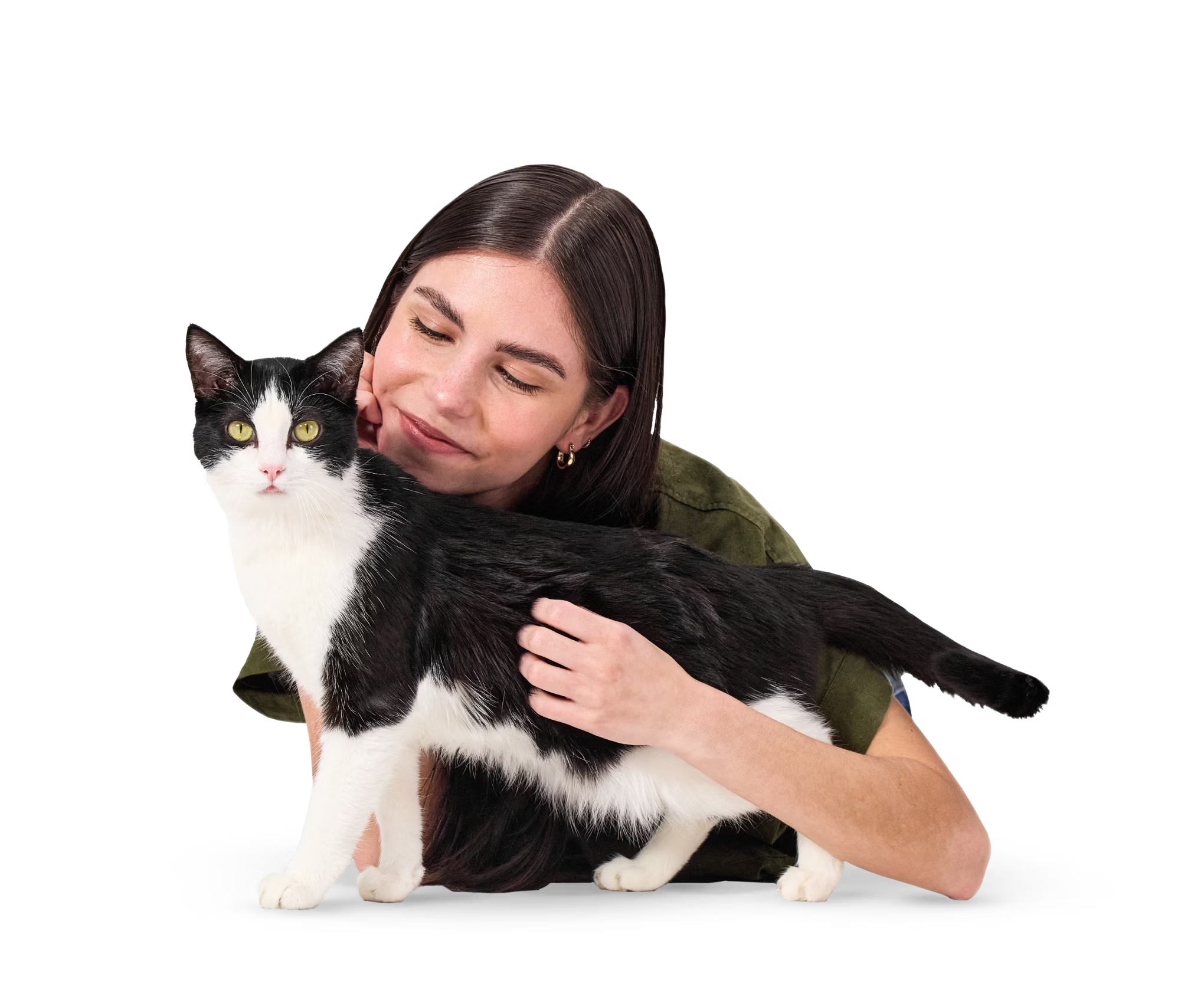GM1 Gangliosidosis
GM1 Gangliosidosis causes muscle tremors, uncoordinated movements, and blindness.
Found in
1 in 1,300 cats
in our testing
Key Signs
Muscle tremors, Lack of coordination, Seizures, Vision loss
Age of Onset
0 to 2 yrs
Juvenile onset
Inheritance
Autosomal Recessive
For autosomal recessive disorders, cats with two copies of the variant are at risk of developing the condition. Cats with one copy of the variant are considered carriers and are usually not at risk of developing the disorder. However, carriers of some complex variants grouped in this category may be associated with a low risk of developing the disorder. Individuals with one or two copies may pass the disorder-associated variant to their kittens if bred.
Likelihood of the Condition
High likelihood
At risk cats are highly likely to show signs of this disease in their lifetime.
What to Do
Here’s how to care for a cat with GM1 Gangliosidosis
Partner with your veterinarian to make a plan regarding your cat’s well-being, including any insights provided through genetic testing. If your pet is at risk or is showing signs of this disorder, then the first step is to speak with your veterinarian.
For Veterinarians
Here’s what a vet needs to know about GM1 Gangliosidosis
GM1 Gangliosidosis is a neurodegenerative disorder caused by dysfunction in lysosomal storage. Deficiency of the ß-galactosidase enzyme leads to accumulation of GM2 ganglioside within the lysosomes of neurons. This accumulation then leads to cellular dysfunction, degeneration, and eventual neuronal death. The onset of clinical signs occurs at approximately three to five months of age. The first clinical signs are mild intention tremors. The disease rapidly progresses to severe ambulatory difficulties, seizures, and blindness. Affected kittens are usually euthanized on welfare grounds by ten months of age.
Upon initial observation of clinical signs, affected cats should be closely monitored to assess welfare and devise a supportive care treatment plan. As clinical signs are progressive, affected cats are usually euthanized on welfare grounds by ten months of age.
For Breeders
Planning to breed a cat with this genetic variant?
There are many responsibilities to consider when breeding cats. Regardless of test results it is important that your cat is in good general health and that you are in a position to care for the kittens if new responsible owners are not found. For first time or novice breeders, advice can be found at most cat registry websites.
This disease is autosomal recessive meaning that two copies of the mutation are needed for disease signs to be shown. A carrier cat with one copy of the GM1 Gangliosidosis mutation can be safely bred with a clear cat with no copies of the GM1 Gangliosidosis mutation. About half of the kittens will have one copy (carriers) and half will have no copies of the GM1 Gangliosidosis mutation. Kittens in a litter which is expected to contain carriers should be tested prior to breeding. Carrier to carrier matings are not advised as the resulting litter may contain affected kittens. Please note: It is possible that disease signs similar to the ones caused by the GM1 Gangliosidosis mutation could develop due to a different genetic or clinical cause.
Technical Details
| Gene | GLB1 |
|---|---|
| Variant | G>C |
| Chromosome | C2 |
| Coordinate | 158,932,167 |
All coordinates reference FelCat9.0
We’ve spent the past 20+ years devoted to DNA. Our team of scientists and vets have spent decades developing the most accurate pet DNA test. Because every pet deserves to have their whole story told. We’ve collaborated with leading academic institutions, innovative research labs, and Banfield Pet Hospital™ to make our process exceptionally precise, fast, and affordable.

References & Credit
Credit to our scientific colleagues:
Martin, D. R., Rigat, B. A., Foureman, P., Varadarajan, G. S., Hwang, M., Krum, B. K., Smith, B. F., Callahan, J. W., Mahuran, D. J., & Baker, H. J. (2008). Molecular consequences of the pathogenic mutation in feline GM1 gangliosidosis. Molecular Genetics and Metabolism, 94(2), 212–221. View the article